How to grow Aeonium
Evergreen succulents found mainly on hillsides in Madeira, the Canary Islands, Cape Verde, North and East Africa. Neat rosettes of fleshy leaves are held at the end of thick stems, leaves ranging in colour from almost black, to light green. Panicles of many small, star-shaped flowers are borne in spring and summer, though it is mainly the foliage for which these plants are grown.
Frost tender, where temperatures fall below 5-10°C aeonium are best grown as houseplants or in a cool greenhouse. They can be moved outside during summer months if desired, and in fact will benefit from the increase in air circulation this provides.
As with all succulents, aeonium store water in their thick, fleshy leaves, and positively thrive on neglect, making them an excellent, low maintenance choice.
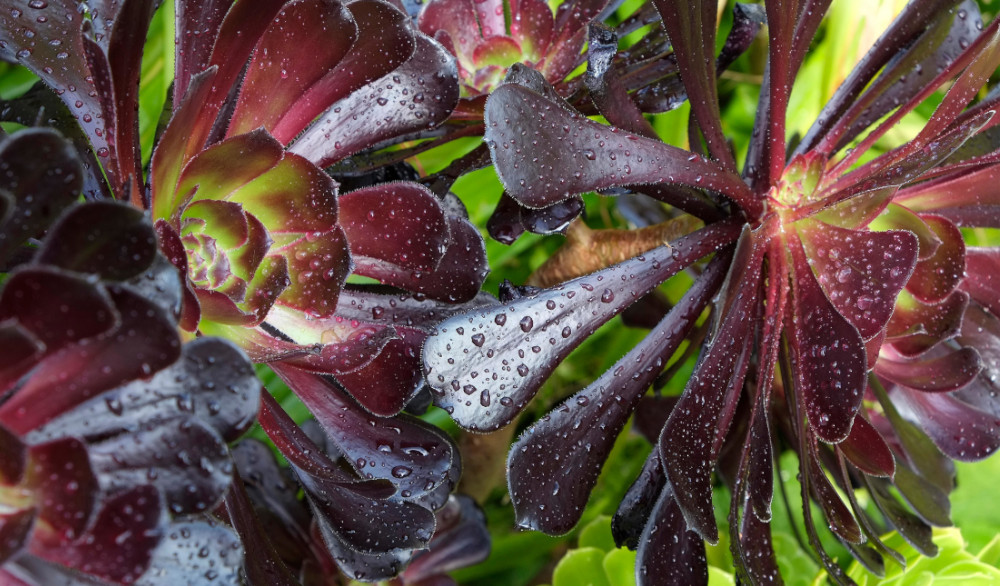
Key Information
Soil pH
Position
Hardiness

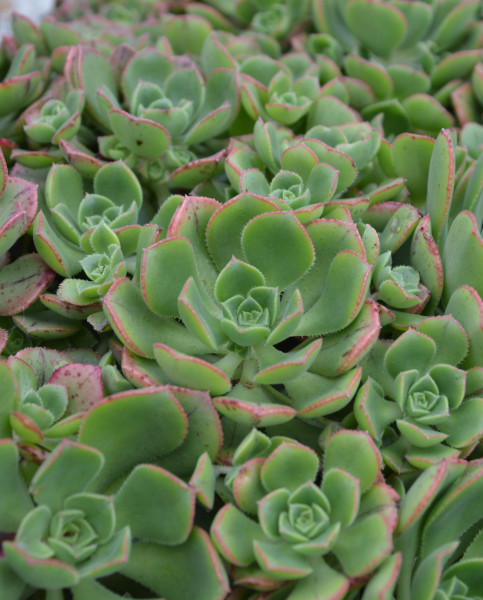
Where & when to plant Aeonium
- Spring is the best time of year to pot up permanently container grown plants, though with a watchful approach to watering it can be done throughout the year.
- INDOORS:
- Ensure that your aeonium is in full light, though not exposed to hot, direct sun. The following suggestions should help explain what is meant by this recommendation, which can seem a little vague and confusing.
-
Locate the plant in a light, south or west-facing room, somewhere other than in the window. This means it will receive high light levels, whilst not being in direct sun
-
Locate the plant in a light, south or west-facing room, on an area of the windowsill which only receives direct sunlight in the morning or evening
-
Locate the plant on a south or west-facing windowsill, with shading provided. A piece of greenhouse shade netting, or child’s car sunshade will work well
-
Locate the plant on a south or west-facing windowsill, and simply form the habit of moving it out of the hottest daytime sun during summer months
- OUTDOORS:
- If your aeonium is moved outside during the warmer summer months, locate in a position of full sun (direct sunlight is fine when glass is taken out of the equation).
How to plant Aeonium
Choose an appropriate container – large enough to hold the root ball with additional space to grow. Ensure there are plenty of drainage holes in the bottom
Use a well-draining potting compost (cactus compost is ideal)
Start with a layer of compost in the bottom of the pot, deep enough so that when sitting on it, the top of the root ball is about an inch beneath the top of the pot
Fill all space surrounding the root ball with compost, using fingers to firm in, avoiding looseness
Place on plant saucer if required
Soak well with water
A mulch with horticultural grit will look attractive and help to prevent a ‘cap’ or crust forming on the top of the compost (something which can happen to container plants as a result of watering)
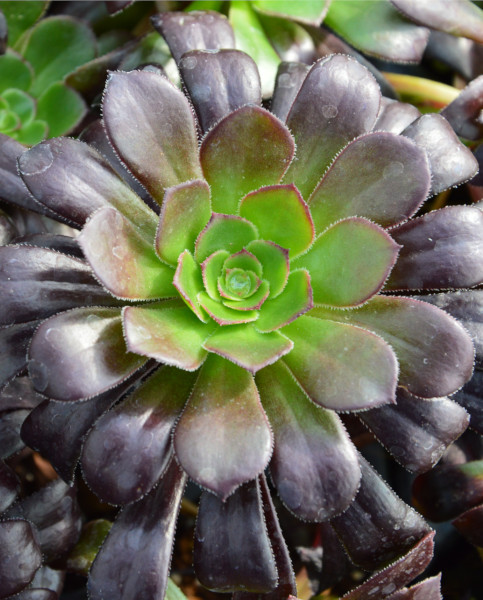
What to plant with Aeonium
Aeonium is at its most impressive when grouped with a range of other succulents. Try our succulent mix, along with a few aloes to get the look.
If you would like any further planting ideas or growing advice for your aeonium, please contact our friendly and knowledgeable Customer Care Team - who will be more than happy to help you.
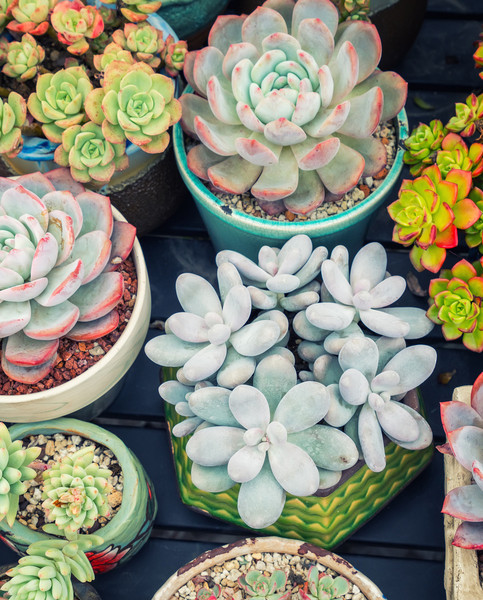

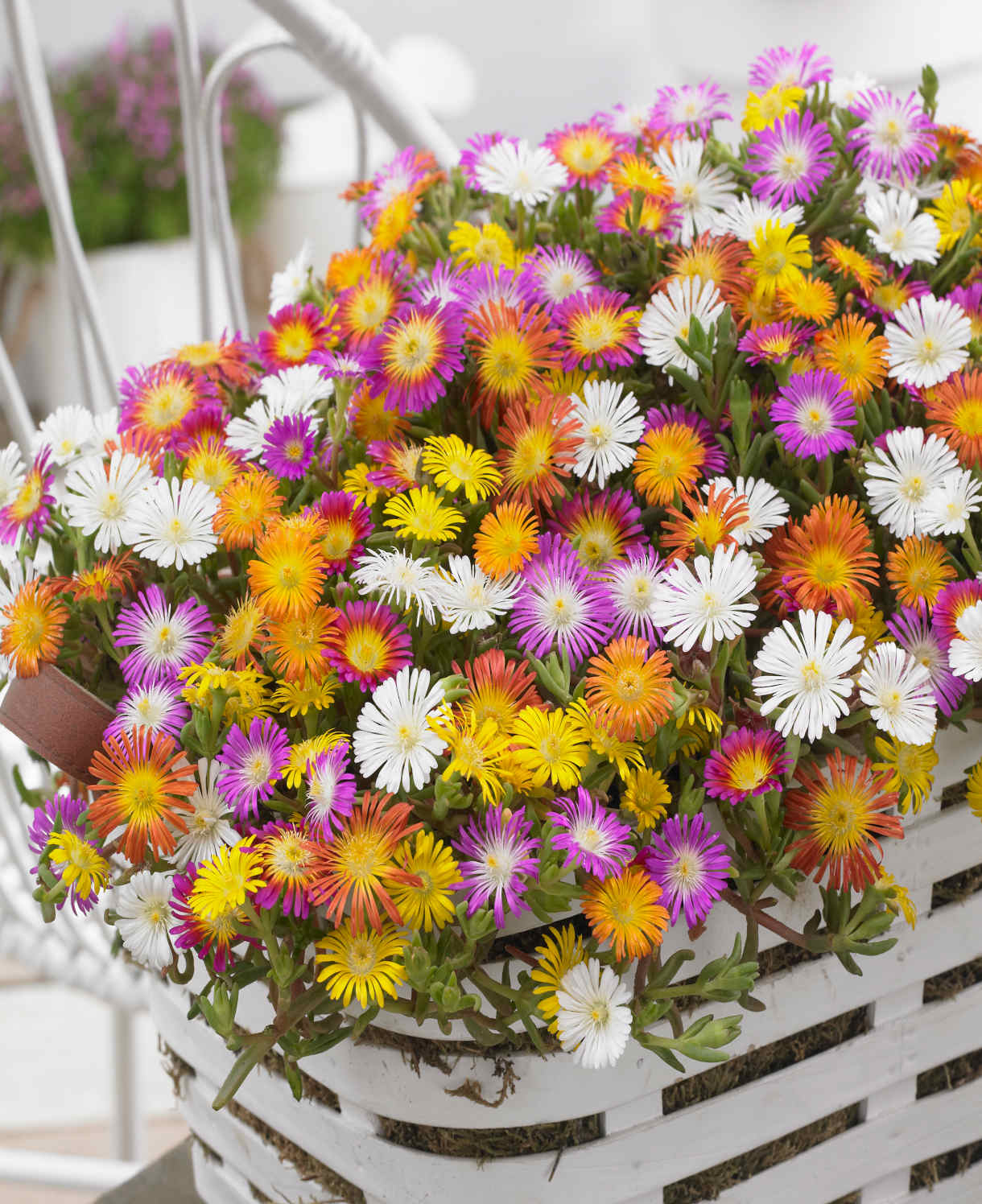
How to care for Aeonium
Pruning and Deadheading
No pruning required.
Watering
Water moderately during growth periods (spring and autumn). Stop watering during dormancy (summer and winter).
During growth periods, allow compost to dry out almost completely between waterings. With this approach you are trying to mimic the natural conditions of growth, whereby the occasional downpour is followed by periods of drought.
Apply a balanced liquid fertiliser 2-3 times during growth periods.
Cold Protection
Aeonium is frost tender, and requires temperatures to remain above 5-10°C.
Pests and Diseases
Aeonium can be prone to aphid, particularly when in flower.
Aphids are small, sap-sucking bugs which form colonies on leaves and soft stems. An essential part of the wider food chain, aphids should be tolerated if possible. However, if present in numbers so substantial they distort growth, reduce vigour, and encourage the formation of sooty mould, you may wish to remove by organic means. This can be as simple as wiping off and squashing by hand, or regularly blasting off the plant using a jet of water from a hose.
How to propagate Aeonium
Aeonium is easy to propagate, by taking cuttings in spring.
- Select young slender shoots (these will root more quickly than older, thicker stems)
- Cut away from the plant using sharp secateurs
- Leave somewhere warm and dry for a few days, until the cut ends have calloused over (this reduces the chance of rotting)
- Fill an appropriately sized container with a well-draining, perlite-heavy compost mix (at least 50% perlite)
- Insert cuttings into compost, leaving some stem and the leaves above the surface. Cuttings should not be touching
- Leave uncovered on a moderately light windowsill
- Keep barely moist until cuttings have rooted. This should take a few weeks; look for roots appearing out of the bottom of the container
- Gently remove cuttings from container, put into individual pots and grow on until large enough to put into permanent container
Common Aeonium Questions
Will my aeonium die after flowering?
Aeoniums are monocarpic, meaning they die after flowering. Fortunately, for branching varieties, only the rosette that produced the flower will die, the rest of the plant will live on. Simply prune out dead stems as and when they occur. Check the habit of your variety to find out what will happen to it after flowering. Regardless, it is a good idea to take cuttings of your aeonium (particularly as they are so easy to do), to ensure you always have new plants.
The leaves of my aeonium look pale and unwell. What is happening?
This could be a sign of overwatering, a common problem faced by aeoniums. Remember to only water during periods of growth (spring and autumn), and to allow the compost to dry out almost completely between waterings.
The rosettes of my aeonium have closed up and have dry leaves on the outside which are dropping off. Is there a problem?
No, this is simply a sign of summer dormancy.




